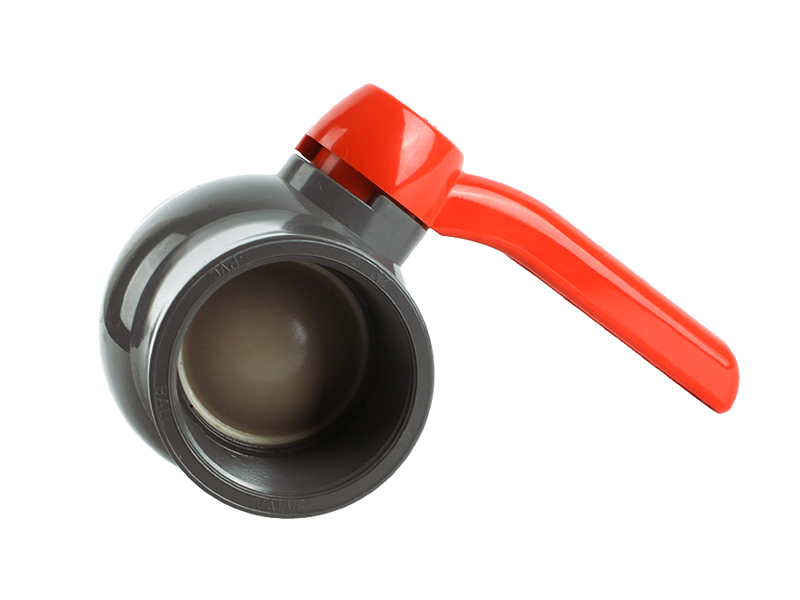How does the male ball valve design enable smooth and effortless on/off operation?
The male ball valve design is a key characteristic...
MORE >>















The Ball Valve is used to control liquid flow. Its seal […]
The Ball Valve is used to control liquid flow. Its seals are commonly made of plastic. These plastics provide excellent sealing performance and can achieve a full sealing with zero leakage. Plastics are also easy to replace and can be used for a variety of vacuum applications. Another great advantage of a ball valve is that it offers a fast open and close cycle. The seals of a ball valve can be easily replaced. In addition, the sealing surface of a ball valve does not come into contact with the medium when it is fully open or closed. This means that the sealing surface of the valve is not susceptible to contamination.There are three basic types of two-way ball valves: one-piece, two-piece, and three-piece. The one-piece style is the most affordable and easiest to use. It is recommended for projects that do not require a high amount of pressure or flow. The two-piece style consists of a body and a connector.
DIN STANDARD Long Handle UPVC Plastic Compact Water Ball Valve

Use: Agriculture irrigation/Mariculture/Swimming pool/Engineering construction
Style Number: XE01007-XE01009
Standard: DIN
Color: Many colors available for choice
Material: UPVC
Sample: Free provided
Certificate: ISO9001:2015, SGS, GMC, CNAS
Delivery: 5-15 days
Packing: Carton, Polybag, Color Box or Customized
Two-way ball valves are generally made of stainless steel and have an investment-cast body. They are rated 100% tight and can be used in many petrochemical and aerospace applications. The reduced port design makes them an excellent choice for low-pressure conditions, but they are also able to handle 1000 PS. They are also available for a variety of pipe sizes, from 1/2" to 4".Three-way ball valves are similar to two-way ball valves, but they have different handles and ports. The three-way type has a vertical T-pattern flow pattern, while the two-way type has a horizontal T-pattern. The T-pattern valves are typically installed with the bottom port of the valve body as the common outlet port. Manual three-way ball valves often change flow paths with each 90-degree turn of the handle.A vented ball valve is a type of pressure-reducing valve that allows a liquid or gas to pass through its side.
The vented design ensures that the process medium stays in contact with the upstream side of the ball. Some manufacturers recommend that the vent be directed back upstream in order to prevent leakage. This valve has an internal vent and an external vent.A two-piece ball valve consists of two parts: a one-piece body with one end connection, and a second piece with a trim and second end connection. These valves are inexpensive and often throw-away. They are not recommended for high-pressure applications. They are best used in low-demand applications.A vented ball valve is very similar to a standard ball valve, except that it has an outlet port for release of pressure. The outlet port is a small hole drilled into the ball and valve body. When the valve is closed, the port lines up with the outlet port, releasing the pressure inside the valve. This makes vented ball valves particularly useful in compressed air systems, where depressurization is necessary to ensure a safe working environment.A reduced port on a ball valve is one which has a smaller internal diameter than its standard counterpart.
This allows for a greater flow rate without significant pressure drop. Compared to full port valves, reduced port valves are also 30% lighter and less expensive. These two types of valves are similar in design, material, and pressure rating. They can also be equipped with manual, pneumatic, and electric actuators. They are also available with screwed and flanged end connections.Reduced port ball valves can be single piece, two-piece, or three-way. They are the least expensive types of ball valves. The disadvantages of single-piece reduced bore valves include the fact that they cannot be opened and repaired. As such, these types of valves are typically used in low-pressure applications or are disposed of when problems arise.Reduced port ball valves are used in applications where flow characteristics are less of an issue. The smaller port size minimizes the amount of turbulent flow in the fluid. These valves can be used for both solids and liquids. But be aware that reduced port valves may produce cavitation. Cavitation is the formation of tiny vapor bubbles within a liquid.

The male ball valve design is a key characteristic...
MORE >>
In today's modern world, efficient and reliable wa...
MORE >>
Copyright ©All rights reserved:Zhejiang Xier Plastic Valve Lead Co.,LTD. PVC Ball Valves Manufacturers Technical support: HWAQ  浙公网安备 33060402001174号
浙公网安备 33060402001174号

 English
English España
España عربي
عربي